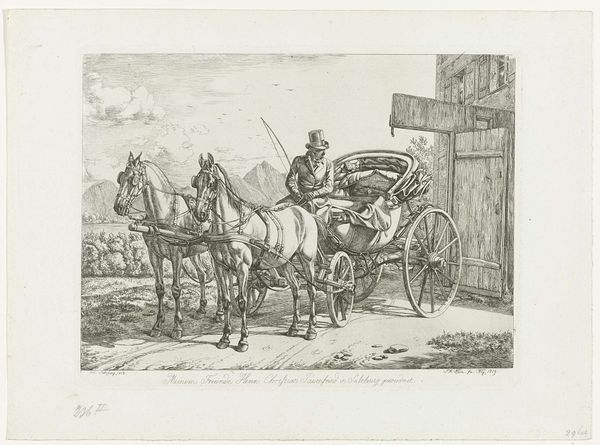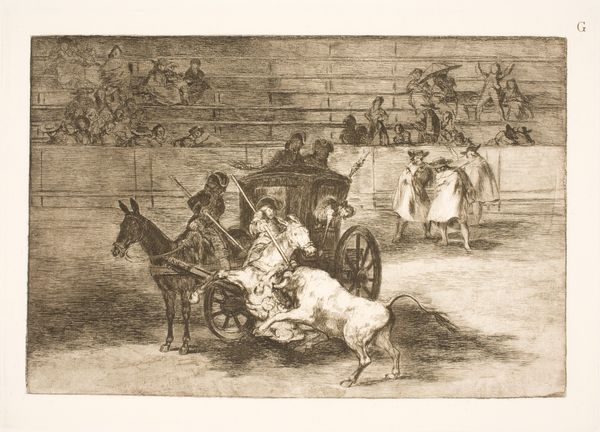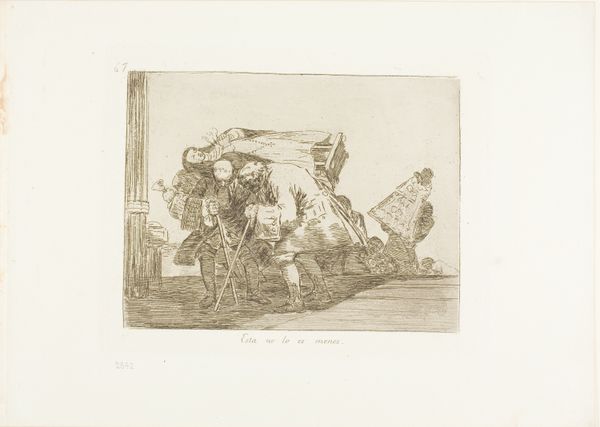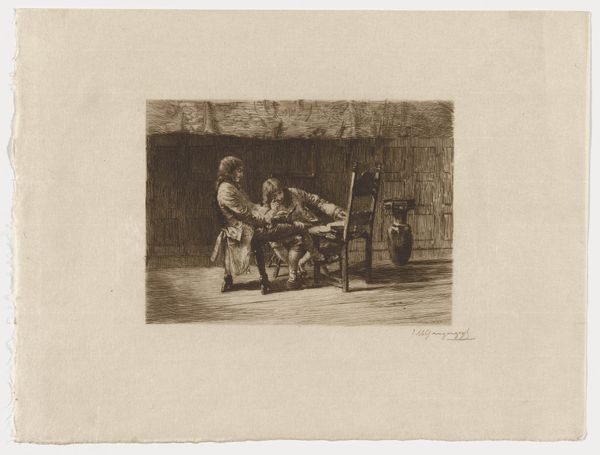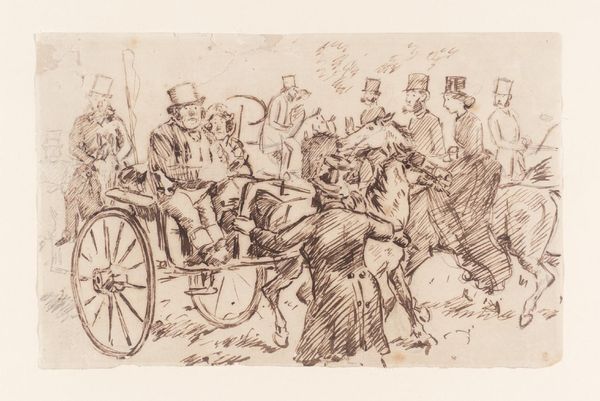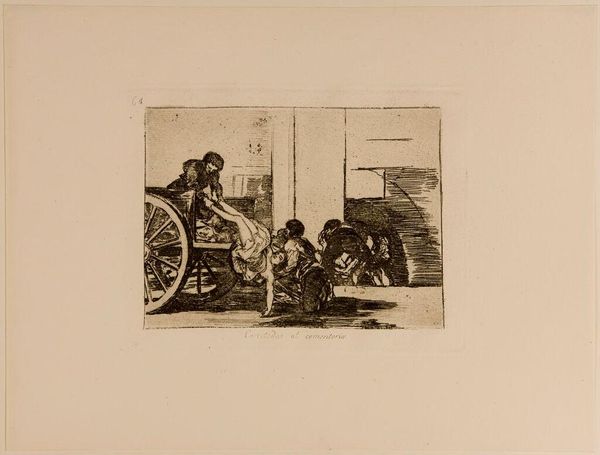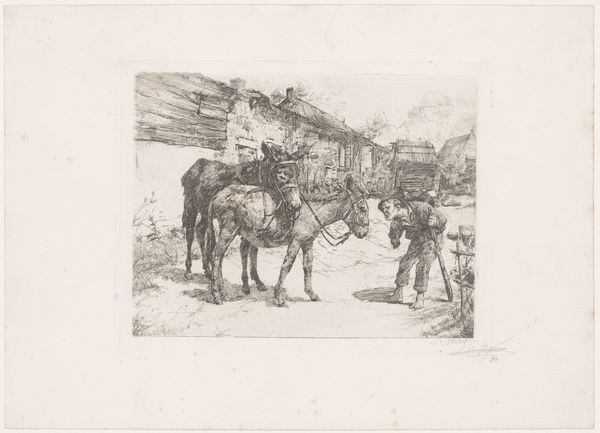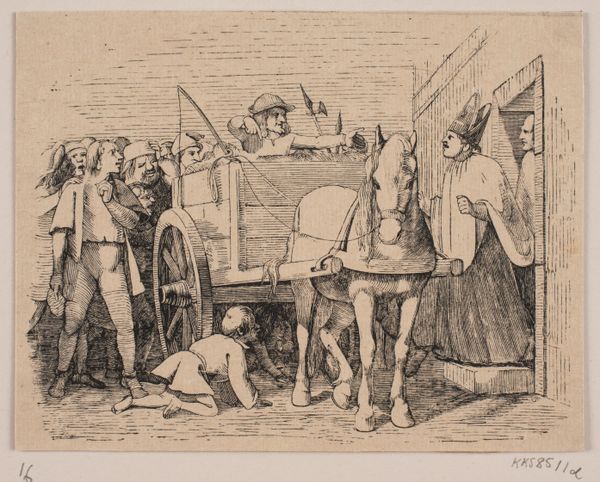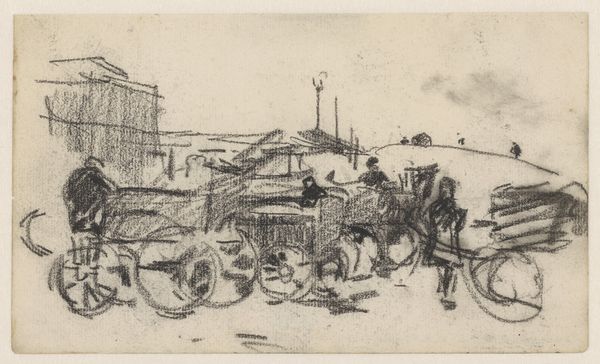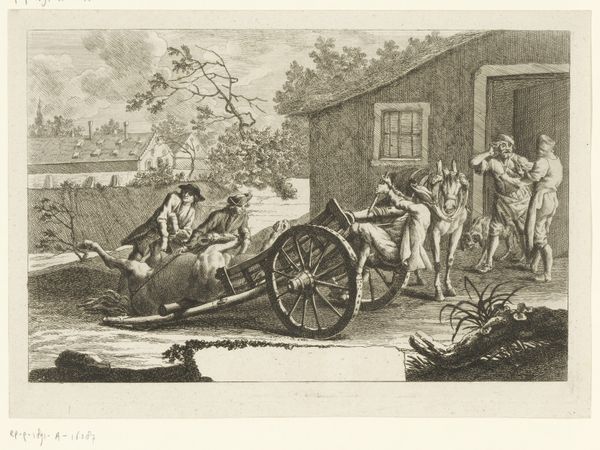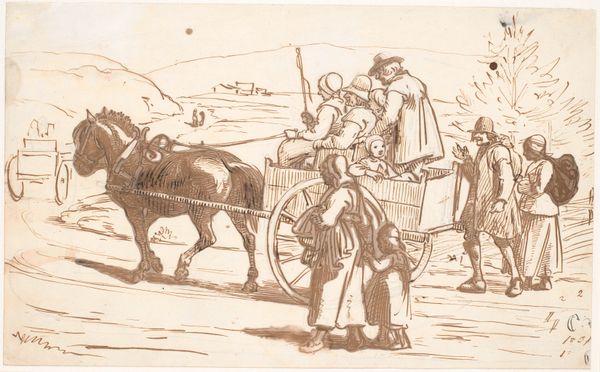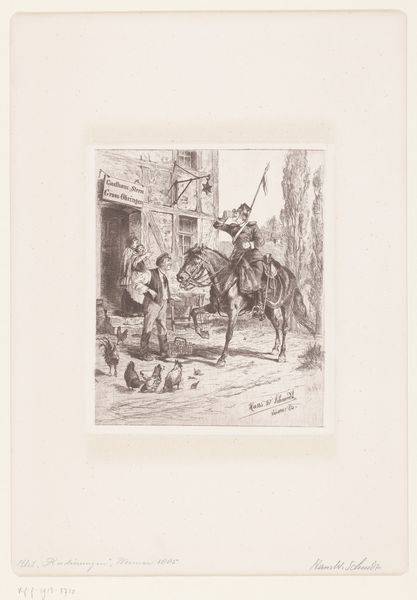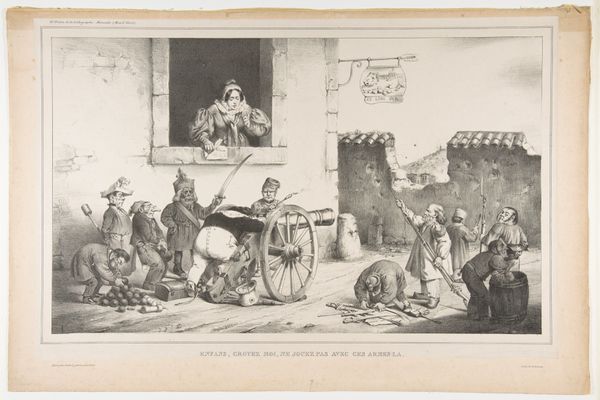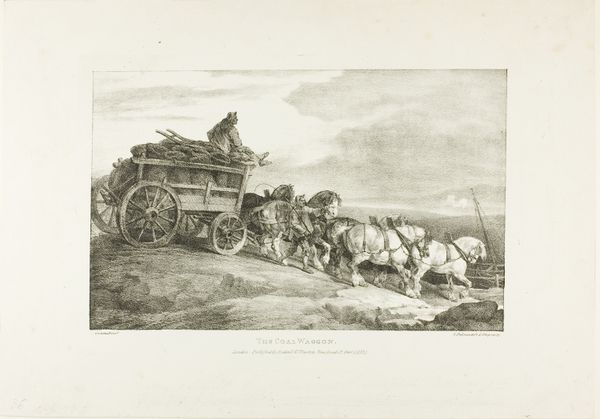
print, etching, engraving
# print
#
etching
#
figuration
#
romanticism
#
genre-painting
#
history-painting
#
engraving
Dimensions: 153 mm (height) x 205 mm (width) (plademaal), 129 mm (height) x 182 mm (width) (billedmaal)
Curator: This is Francisco de Goya's "Cartloads to the Cemetery," created sometime between 1810 and 1820. It's an etching, a print, currently held at the Statens Museum for Kunst. Editor: Goya. Instantly recognizable even in the shadows of this print. It’s haunting. I see chaos, a brutal scene… is that a body being thrown onto a cart? Curator: Indeed. Goya created this piece amidst the Peninsular War and its aftermath. Consider the social context: famine and disease were rampant. The print unflinchingly portrays the grim realities of death during that period, its effects on the living too. Editor: I notice the light and shadow – they almost feel unbalanced. As if the living are perpetually stuck in a world half-lit. The figures blend into each other, anonymity becoming a second death. Curator: Exactly. The lack of individualization is deliberate. Goya critiques the institutional failings that exacerbated suffering, and how the grand narratives of war are too blind to it all. His prints became a form of visual dissent. Editor: Dissent distilled to raw emotion. The off-kilter composition throws me. It isn't pretty death; it is unceremonious. How does one reconcile with the absence of beauty, or ceremony? Curator: By confronting it, perhaps. Art like this compels us to examine uncomfortable truths about society and governance, raising important questions about how institutions manage such crises and tend to human life during a societal tragedy. Editor: You know, that cart becomes more symbolic with that in mind, it’s an uncaring conveyance of forgotten lives, I keep looking back to it and the person throwing on bodies just throwing lives on with such haste, in an unsorted jumble. Curator: Goya was interested in exactly those aspects of how public life interacts with private tragedies, or how public disasters take shape through aggregated suffering on this human scale. His art becomes a visual document, a testament, to human resilience, or to its failure, in certain times. Editor: I see. Leaving me to ponder the space between survival and oblivion... very powerful and still speaking today, as all real art does!
Comments
No comments
Be the first to comment and join the conversation on the ultimate creative platform.
